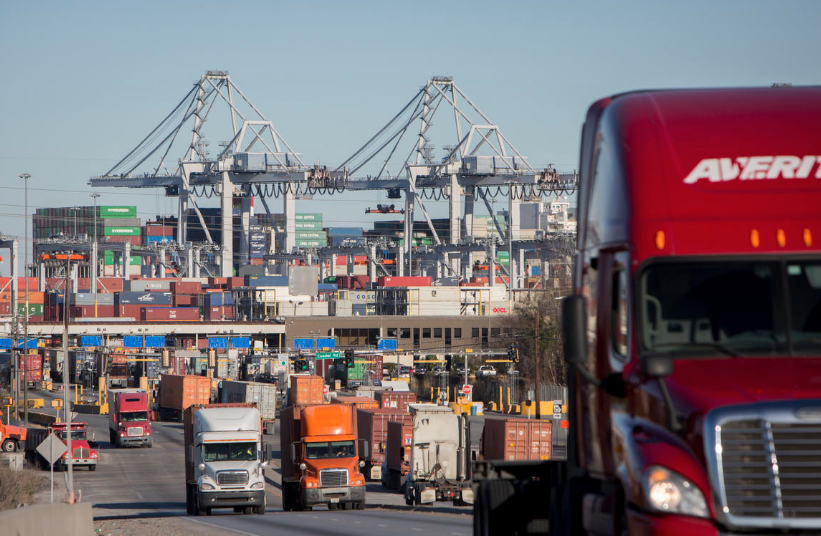Freight’s Volume Strong, Pricing Even Stronger
From both a volume and a pricing perspective, the U.S. freight economy continues to be extraordinarily strong.
The Cass Freight Shipments and Expenditures Indexes are clearly signaling that the U.S. economy, at least for now, is ignoring all of the angst coming out of Washington D.C. about the trade wars. Despite Wall Street’s concerns about the increased threat of inflation or interest rates hikes, these indexes are displaying accelerating strength on top of increasingly difficult comparisons. Demand is exceeding capacity in most modes of transportation by a significant amount. In turn, pricing power has erupted in those modes to levels that continue to spark overall inflationary concerns in the broader economy.
Cass reports that it does fear long-term inflationary pressure as technology continues to provide multiple ways to increase asset utilization and price discovery in all parts of the economy, especially in transportation. In fact, we are seeing more signs that ELDs (Electronic Logging Devices) initially hurt the capacity/utilization of truckers (particularly small truckers), but many of the truckers most adversely affected are now beginning to get some of the loss in utilization back, especially in the dry van and reefer (temperature control) marketplaces. The flatbed segment of trucking, however, is continuing to struggle with productivity after the adoption of ELDs.
Transportation is a Leading Indicator
Both shipments and expenditures first turned consistently positive 19 months ago. The current level of volume and pricing growth is signaling that the U.S. economy is growing, but that level of growth may have reached its short-term expansion limit. The 10.6% YoY increase in the July Cass Shipments Index is yet another data point confirming that the strength in the U.S. economy continues. We are confident that the increased spending on equipment, technology, and people will eventually result in increased capacity in most transportation modes. That said, many modes are reporting limited amounts of capacity or even no capacity at any price shippers are willing to pay.
The first seven months of 2018 have clearly signaled that, barring a negative ‘shock event’, 2018 will be a very strong year for transportation and the overall economy. July, June, May, April and March exceeded all levels attained in all months in 2014 (a very strong year), while February was roughly equal to the peak month in 2014 (June 2014 – 1.201 vs February 2018 – 1.198) which is extraordinary. A YoY stacked chart highlights that, similar to the pattern which began in November and December 2017, the shipments index is exceeding all previous respective months.
The YoY percentage change is notable because the freight recovery started in the second half of 2016 (i.e., tougher comparison) and because only when comparisons were weak (i.e., 2009-2010) were the percentage increases so high. Said another way, we normally only see such high percentage increases in volume when related to easy comparisons. That these percentage increases are so strong and strong against tough comparisons, explains why our outlook is so bullish, why capacity is so constrained, and why realized pricing is so strong.
Putting it all in Perspective
Expenditures (or the total amount spent on freight) turned positive for the first time in 22 months in January 2017, albeit against an easy comparison. Not since 2011—when the economy was still climbing out of the recession—had this index been so low. Our Expenditures Index in January 2016 was the worst in five years, as demand had weakened and crude oil had fallen below $30 a barrel. Although February and March of 2016 were also weak, they were not nearly as weak as January 2016 and, hence, a slightly tougher comparison. Since fuel surcharges are included in the Expenditures Index, fuel was a positive bias in 2017 and continues to be in the current data.
Throughout much of 2017, fuel was up as much as 30% on a YoY basis (diesel is at $3.22 a gallon on a national average basis as we write this), and we have pointed out that part of the Expenditures increase was a result of the relatively steady increase in the price of fuel and the related fuel surcharges. The YoY increase attributable to fuel remains significant (up an average of 29.5% on a YoY basis in July). We also continue to see strengthening in pricing power of truckers and intermodal carriers. As an example, the proprietary Cass Truckload Linehaul Index (which measures linehaul rates and does not include fuel) rose 10.2% on a YoY basis in the month of July, which is the strongest percentage increase it has posted in this recovery. The proprietary Cass Intermodal Price Index (which does include fuel), increased 12.0% in July (see those reports here for more details on the data and the underlying trends).
Category: Featured, General Update, News











